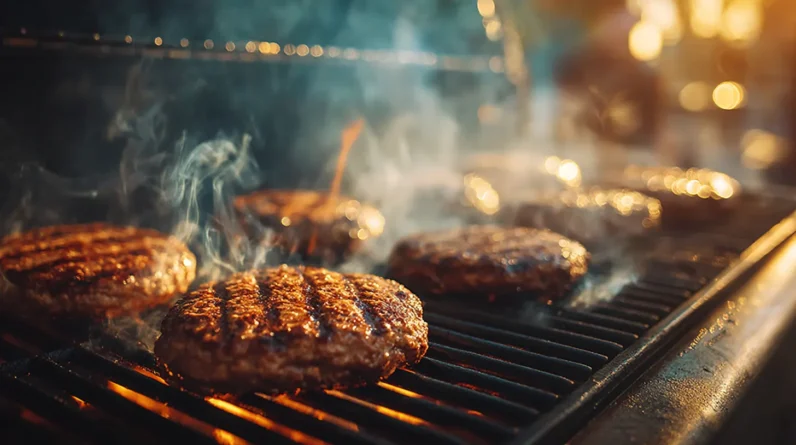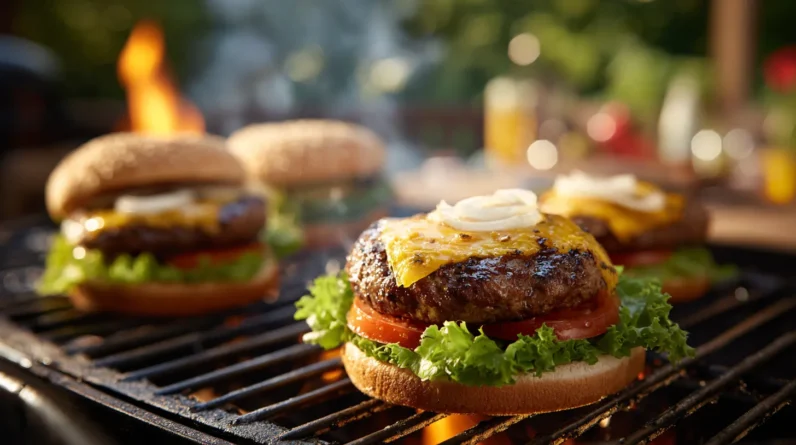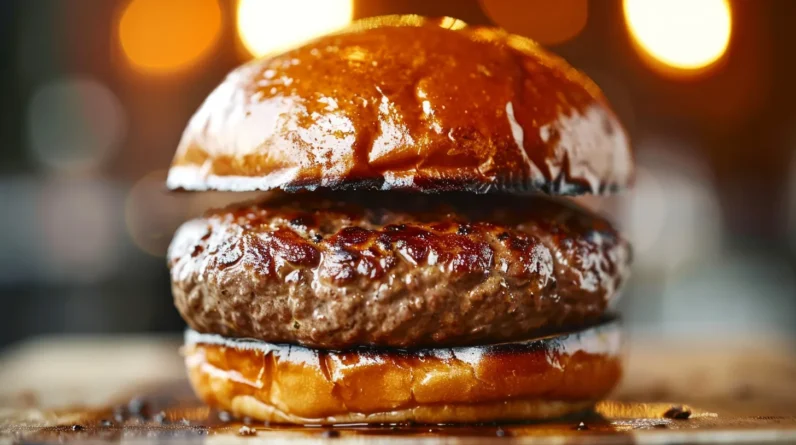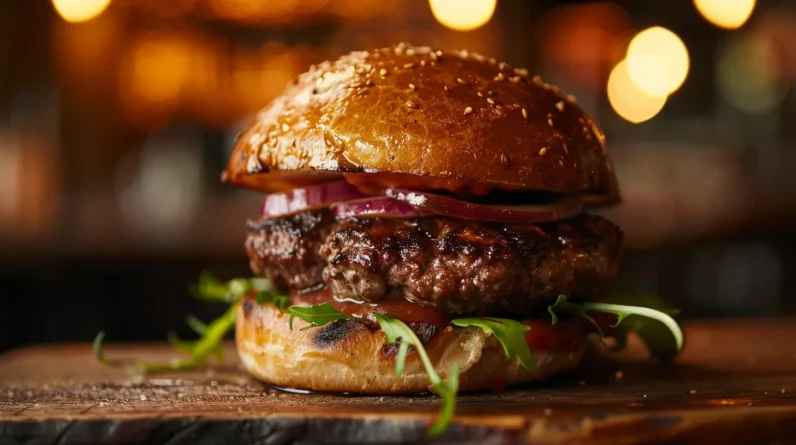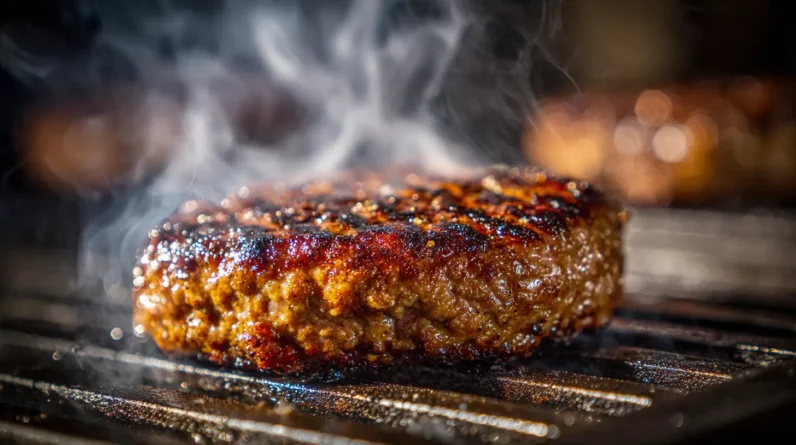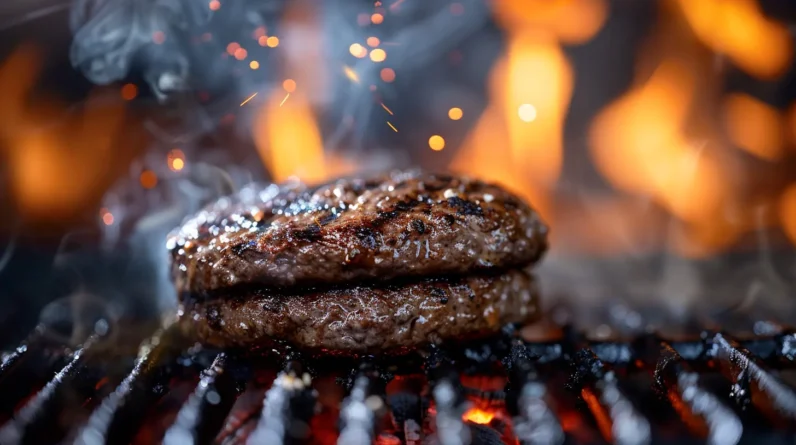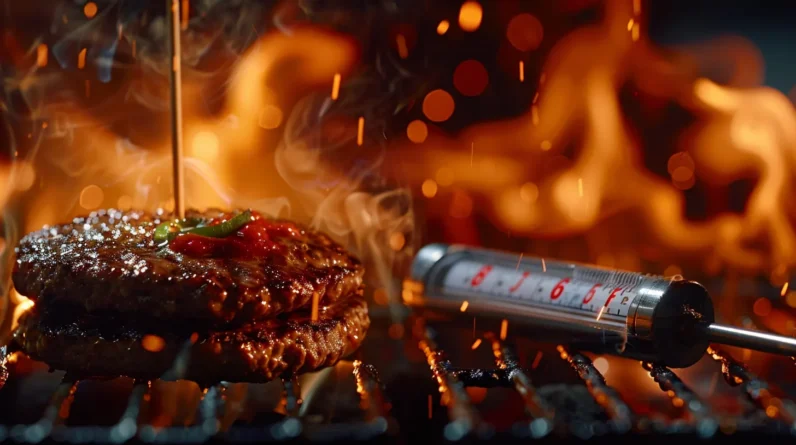
It is understood that mastering grill temperatures is essential for cooking burgers to perfection, and it all begins with understanding the ideal internal meat temperatures – 130-135°F (54-57°C) for medium-rare, 140-145°F (60-63°C) for medium, and at least 160°F (71°C) for safe consumption, as recommended by the USDA. We also must strategically utilize grill zones, with direct heat for searing and indirect heat for finishing. But how do we achieve precise temperature control and guarantee safe food handling practices? By exploring these intricacies, we’ll uncover the secrets to perfectly cooked burgers.
Understanding Internal Meat Temperature
When cooking burgers, we’re often told to check the internal temperature of the patty – but why is this so important? The internal temperature is a critical indicator of food safety and patty quality. As burgers cook, the proteins denature and the connective tissues break down, affecting texture and juiciness. For medium-rare, we aim for an internal temperature of 130-135°F (54-57°C), while medium and medium-well require 140-145°F (60-63°C) and 150-155°F (66-68°C), respectively.
The USDA recommends cooking ground beef to at least 160°F (71°C) to minimize the risk of foodborne illness. By monitoring internal temperature, we can guarantee our burgers are both safe to eat and cooked to our desired level of doneness.
The Role of Grill Zones
Monitoring internal temperature is key to cooking burgers to our desired level of doneness, but it’s just one piece of the puzzle. To achieve ideal results, we must also understand the role of grill zones. A grill is typically divided into two main zones: direct heat (high-temperature zone) and indirect heat (low-temperature zone). Direct heat is ideal for searing burgers, while indirect heat is perfect for finishing them. By dividing the grill into these zones, we can control the cooking process more effectively.
The direct heat zone typically ranges from 400°F to 500°F (200°C to 260°C), while the indirect heat zone ranges from 200°F to 300°F (90°C to 150°C). By utilizing these zones strategically, we can achieve perfectly cooked burgers every time.
Temperature Control Techniques
To master the art of grilling burgers, we need a solid grasp of temperature control techniques that complement our grill zones. We achieve precise temperature control by adjusting the airflow, fuel supply, and grill height. By adjusting the air vents, we regulate the oxygen flow, allowing us to fine-tune the heat. For gas grills, adjusting the burner settings provides accurate temperature control. We also use the grill height to control the distance between the patties and the heat source.
We utilize the thermometer to monitor the temperature in real-time, making adjustments as needed to maintain the ideal temperature range for our desired level of doneness. This level of control is essential for achieving perfectly cooked burgers.
Safe Food Handling Practices
We’ve established a foundation in temperature control techniques, but mastering the art of grilling burgers also requires a strong understanding of safe food handling practices. To guarantee the quality and safety of our burgers, we must adhere to strict guidelines. When handling raw meat, we should prevent cross-contamination by separating raw patties from cooked burgers and other foods. We should also use utensils and plates dedicated to raw meat only.
Washing our hands thoroughly before and after handling raw meat is essential. Additionally, we must refrigerate or freeze our burgers promptly to prevent bacterial growth, keeping them at a temperature of 40°F (4°C) or below.
Conclusion
We’ve spent years perfecting the art of grilling burgers, and yet, it all comes down to one thing: temperature control. It’s ironic that something so simple can make or break a perfectly cooked patty. By mastering internal meat temperatures, utilizing grill zones, and employing precise control techniques, we can finally achieve that elusive, juicy burger. Safe food handling practices are the icing on the cake – or should we say, the cheese on the burger.


